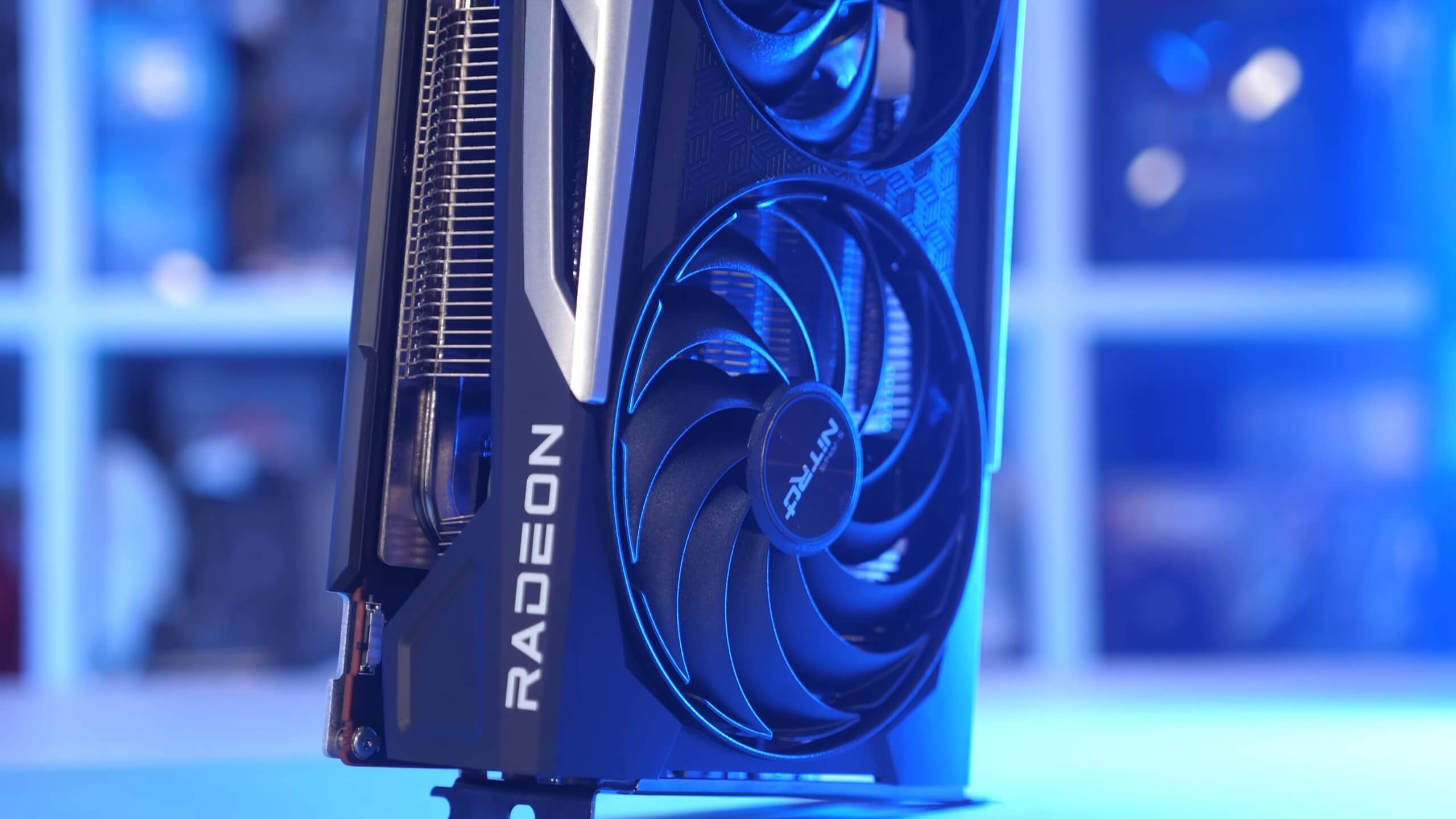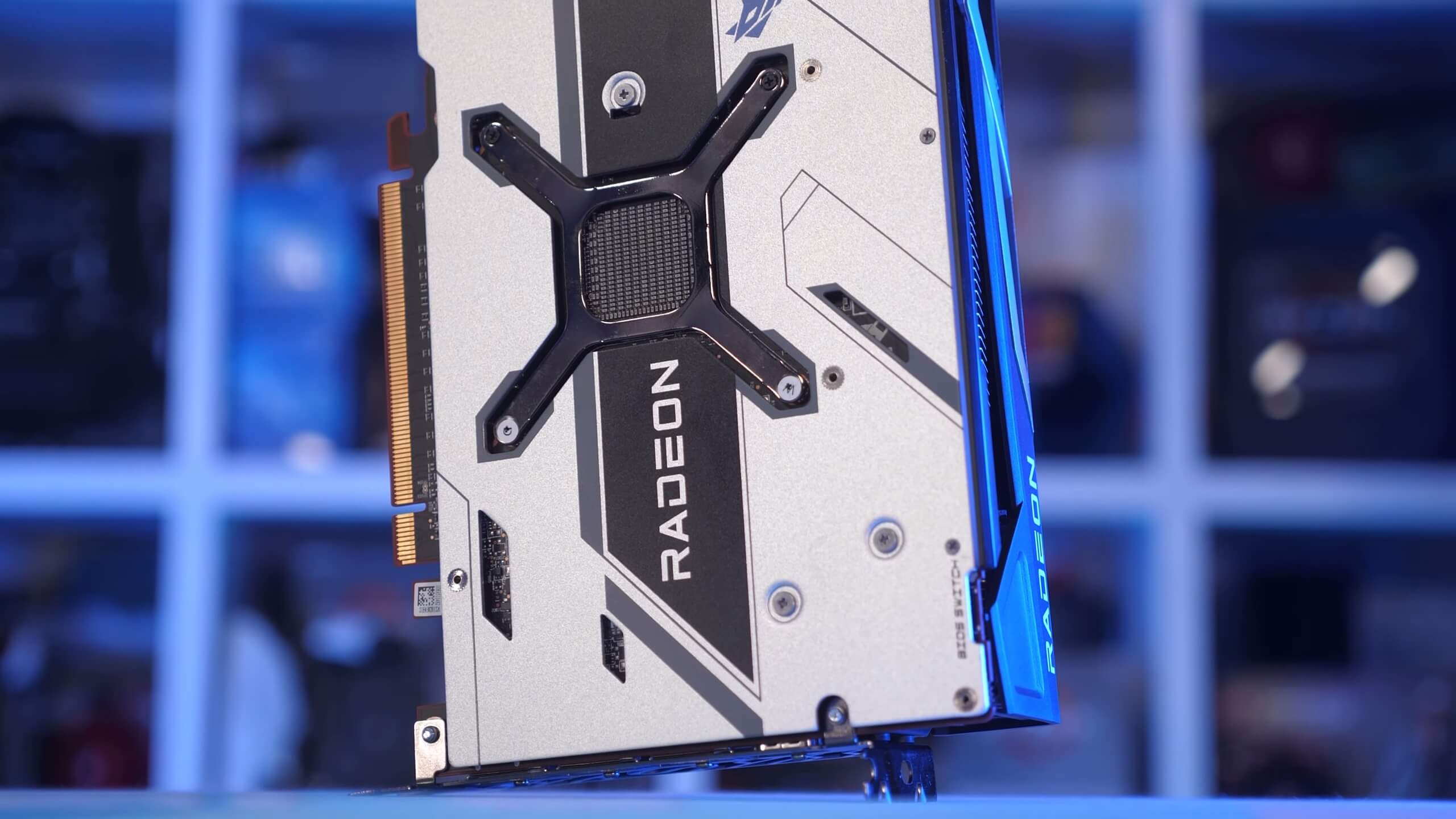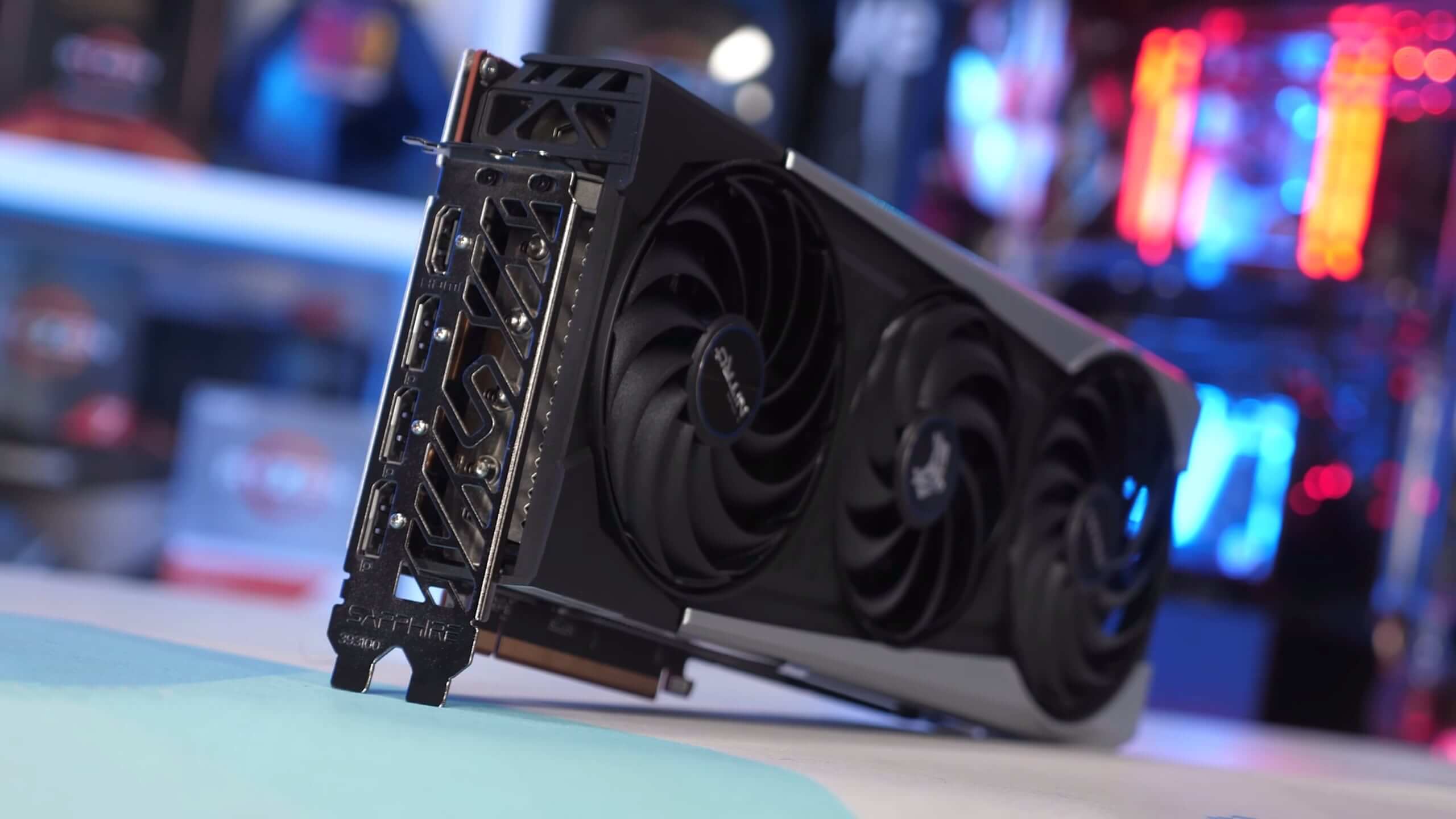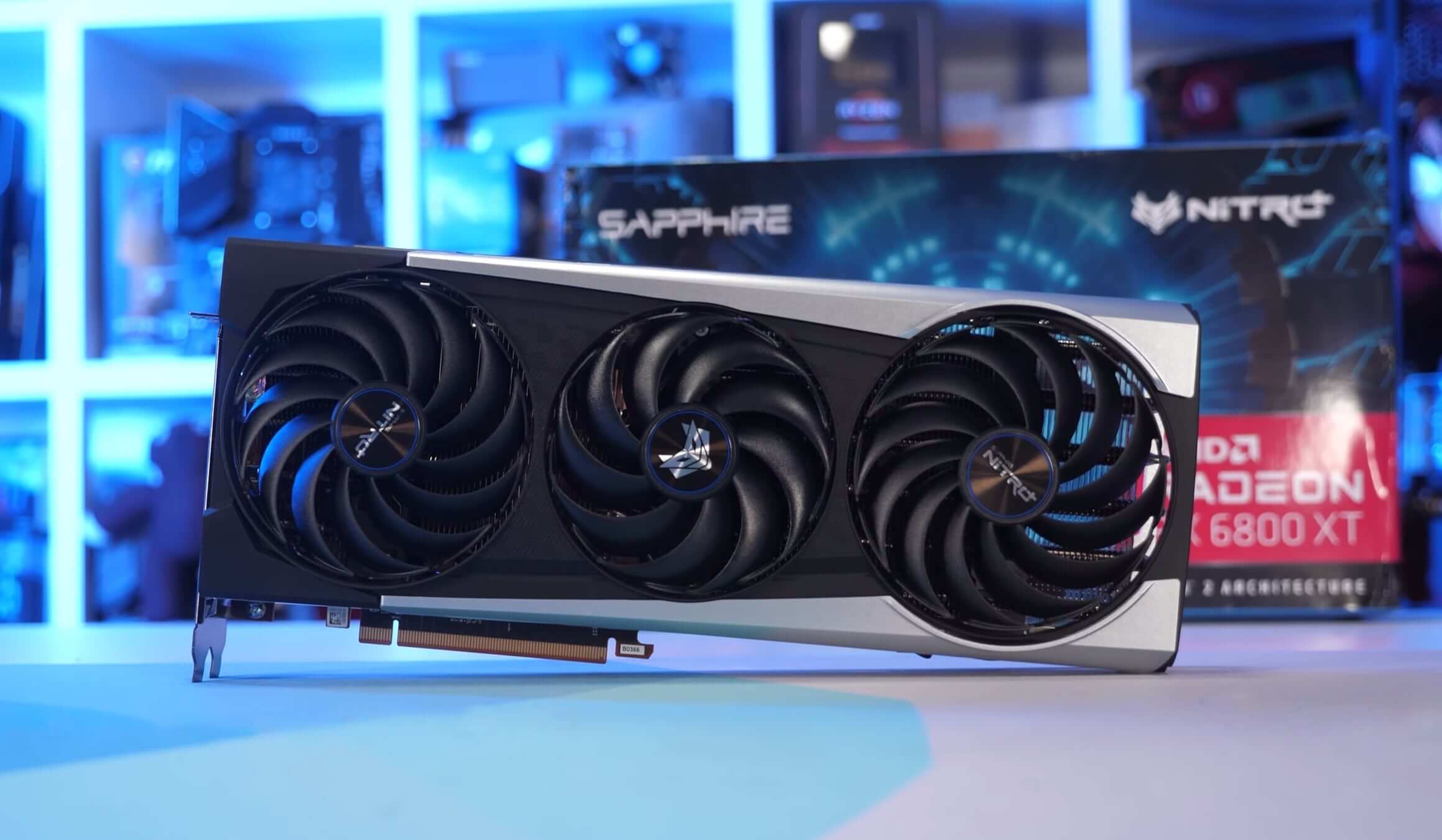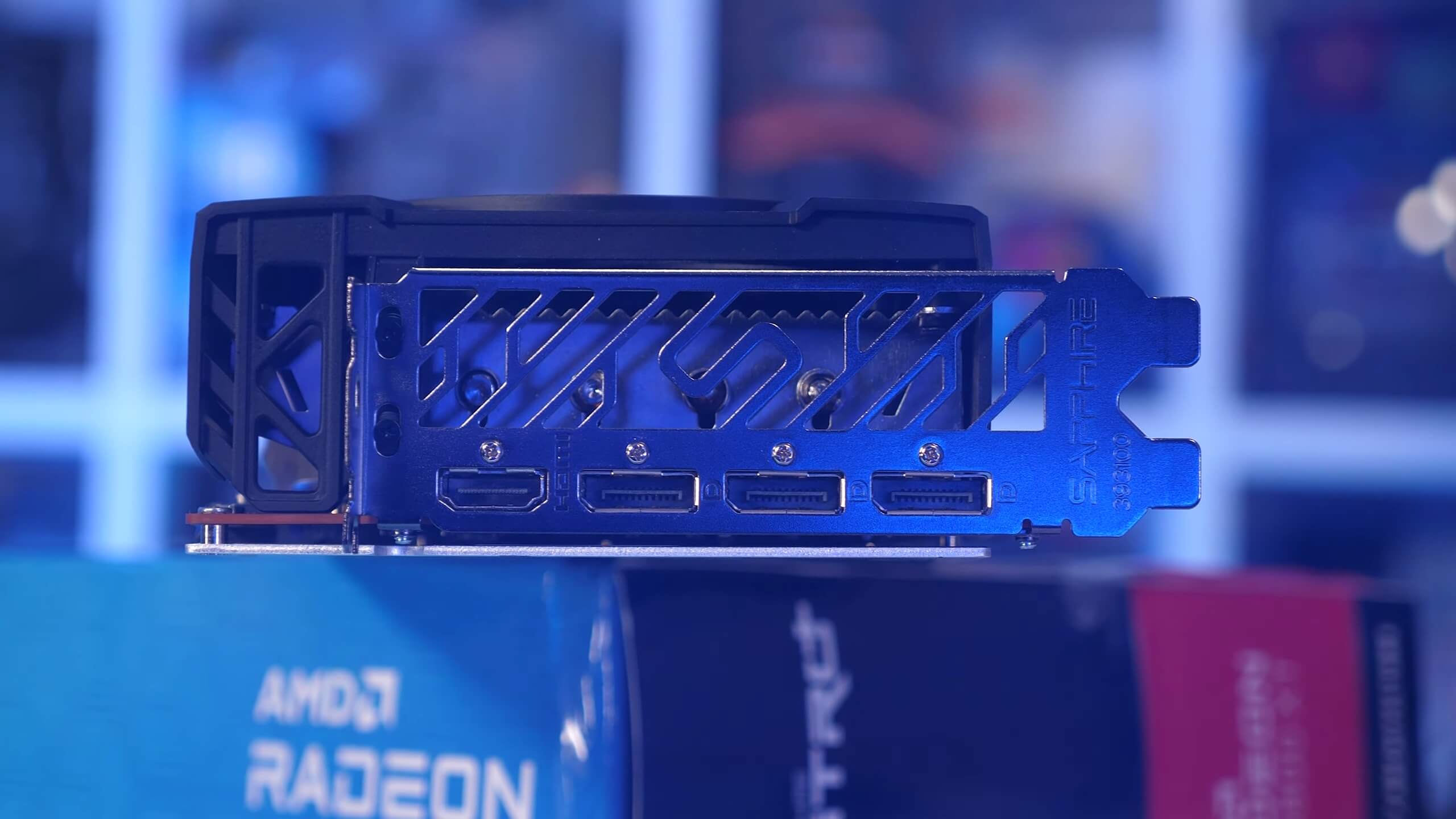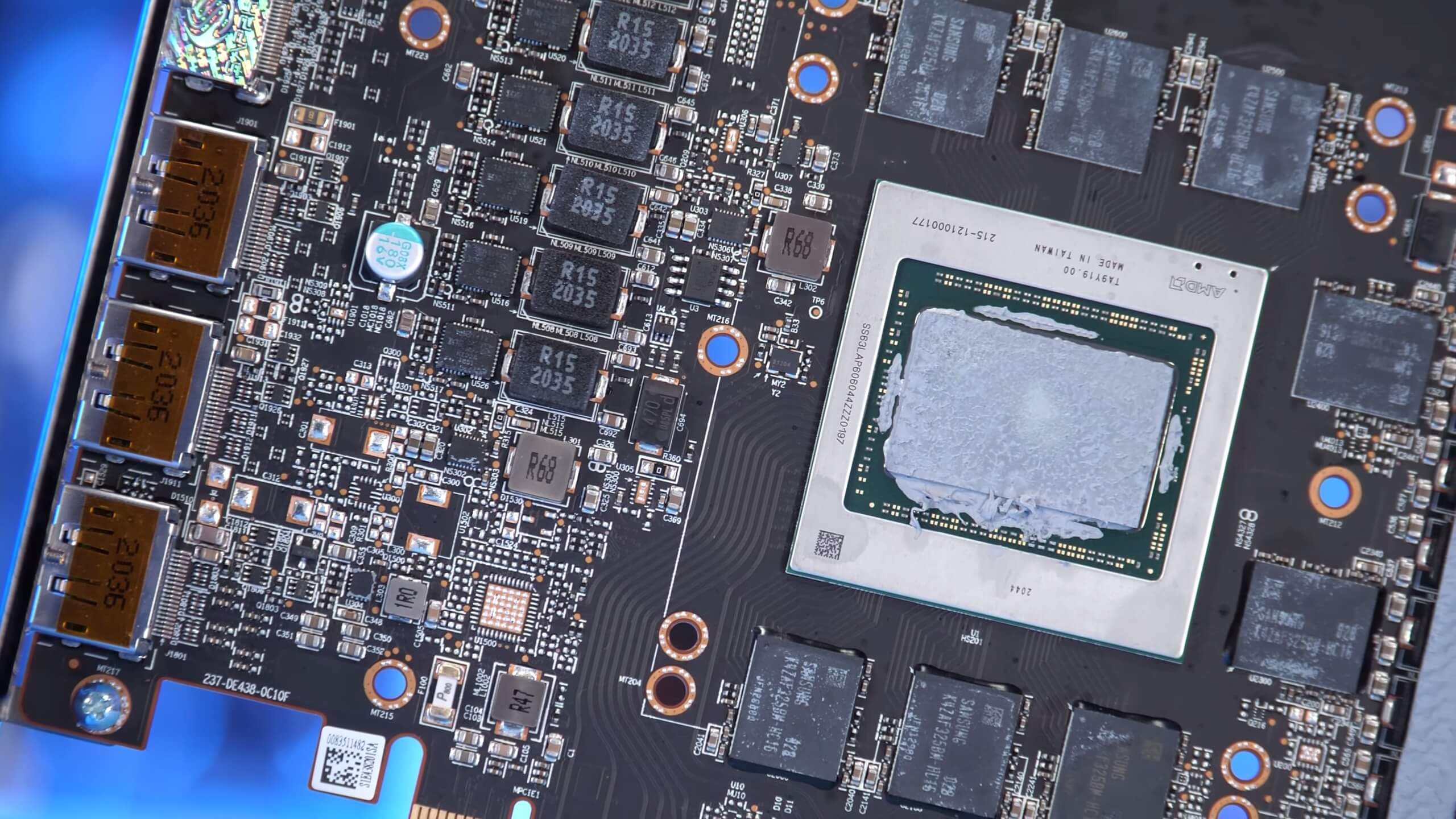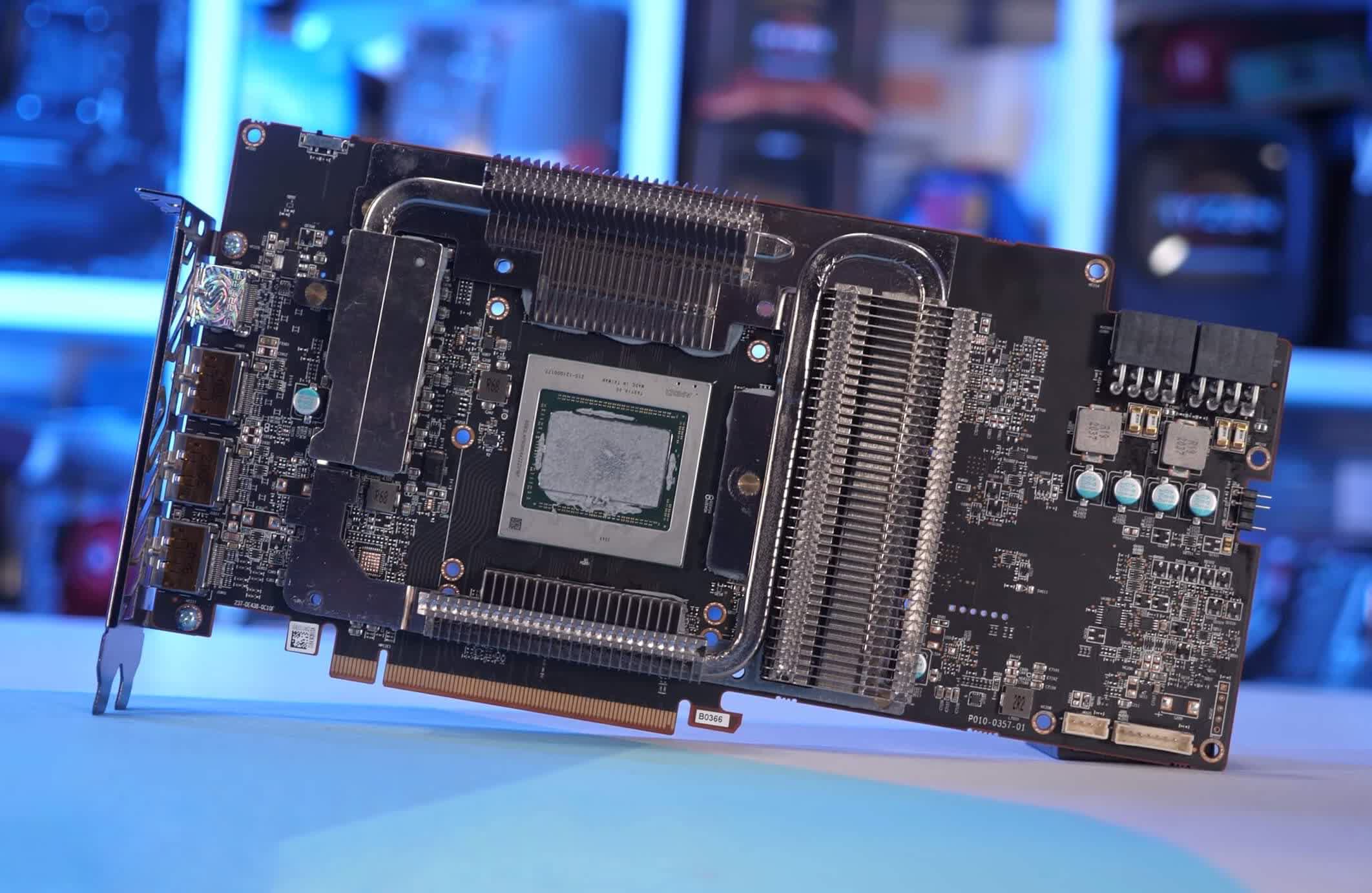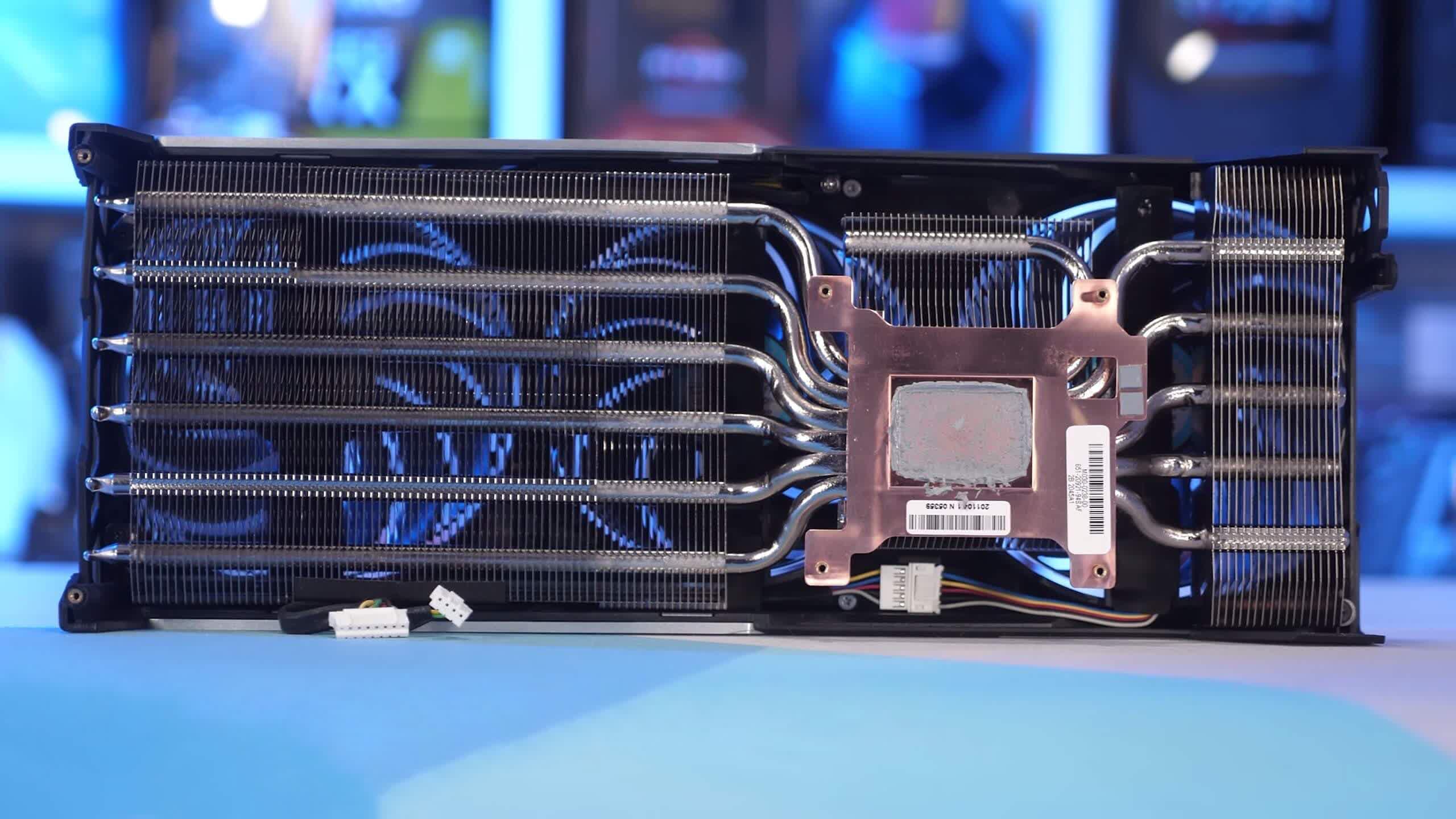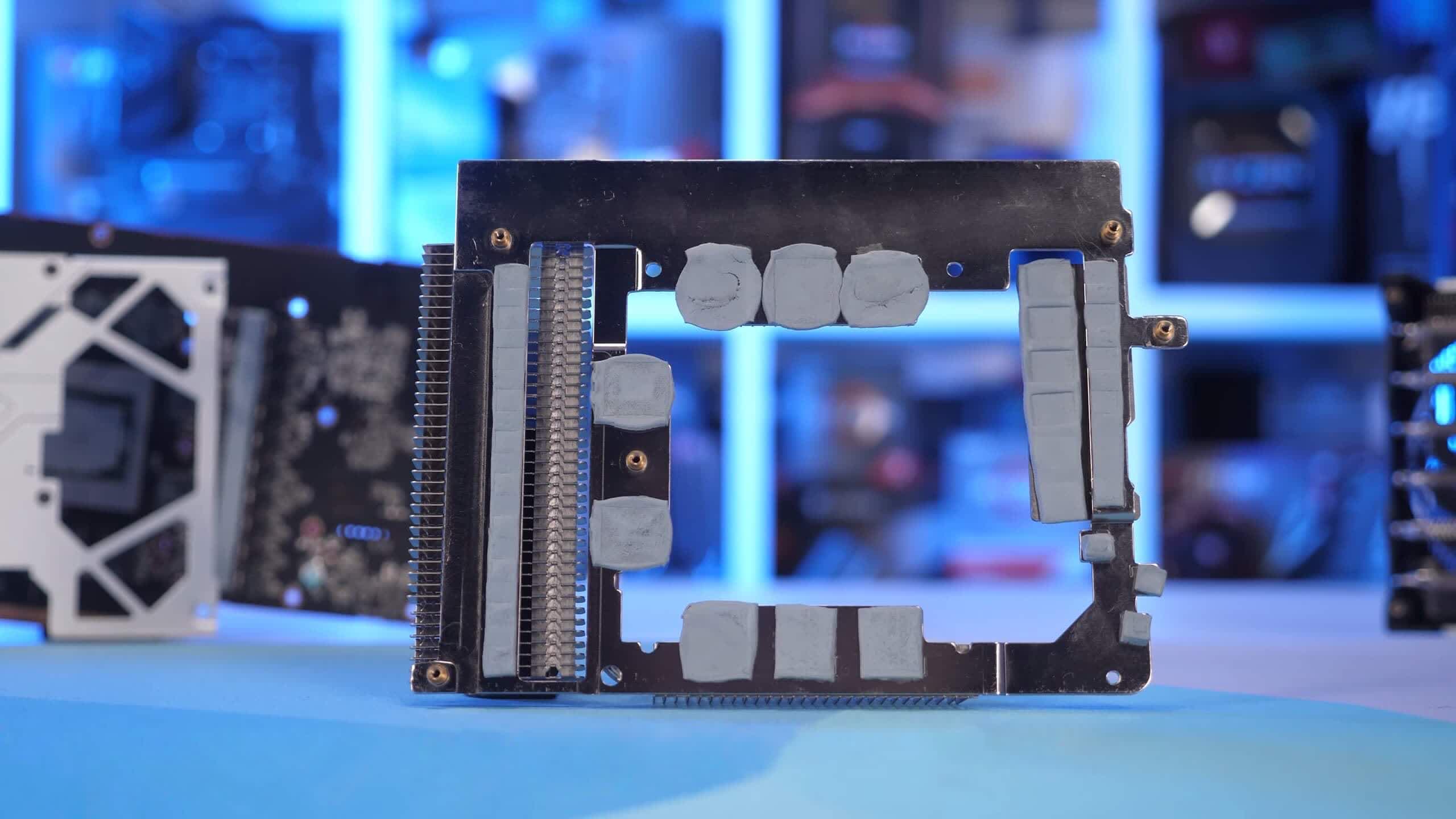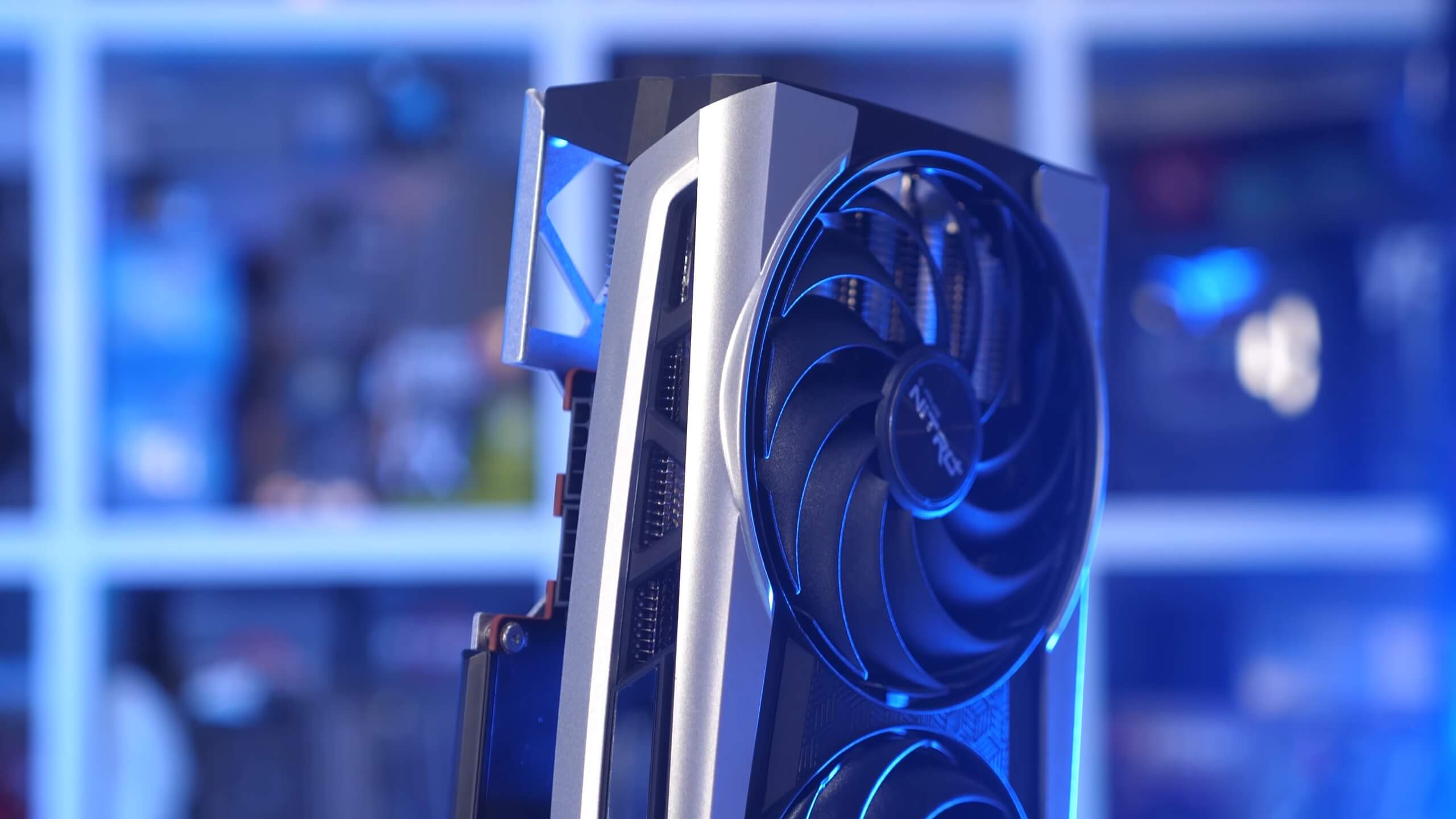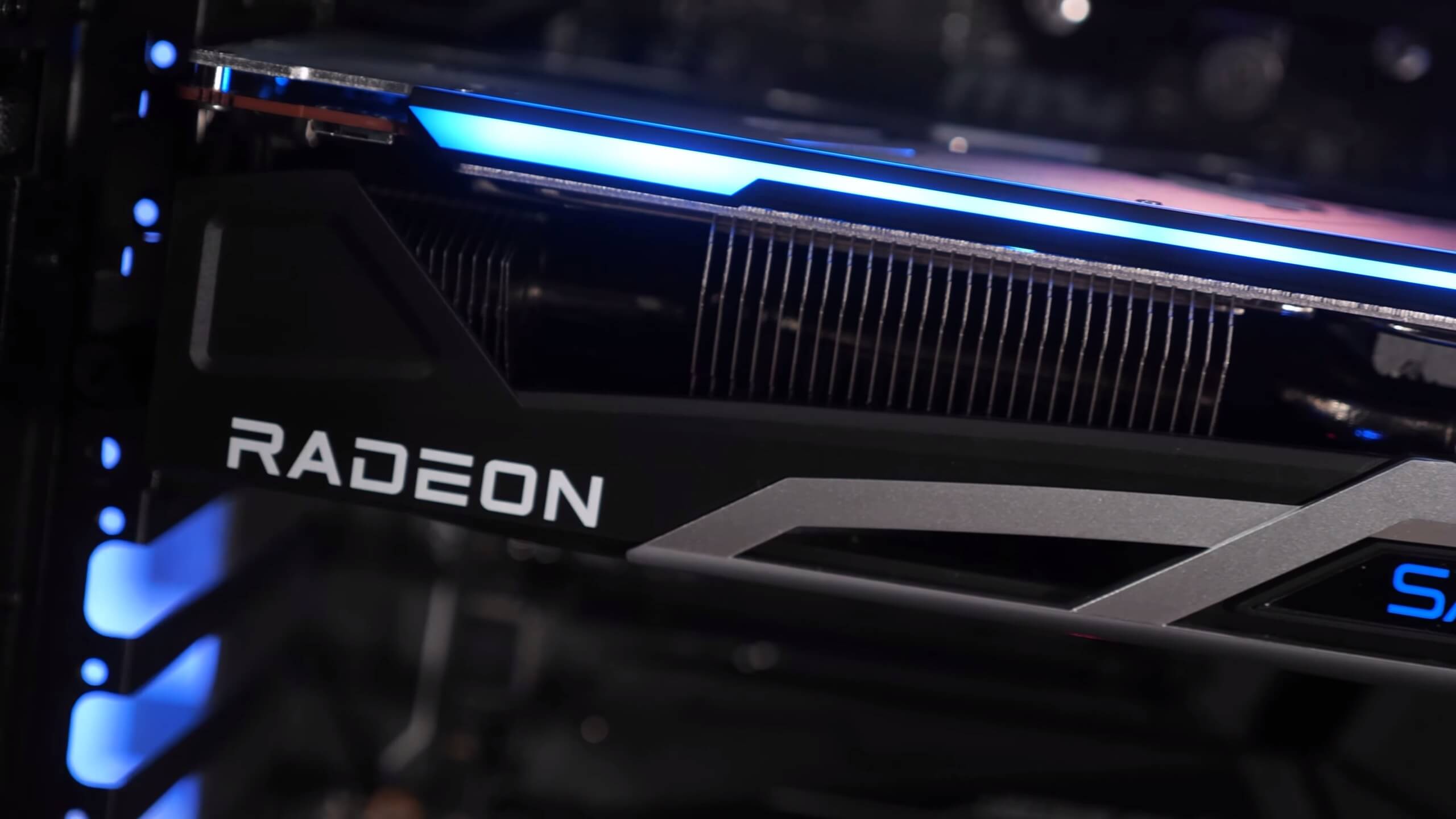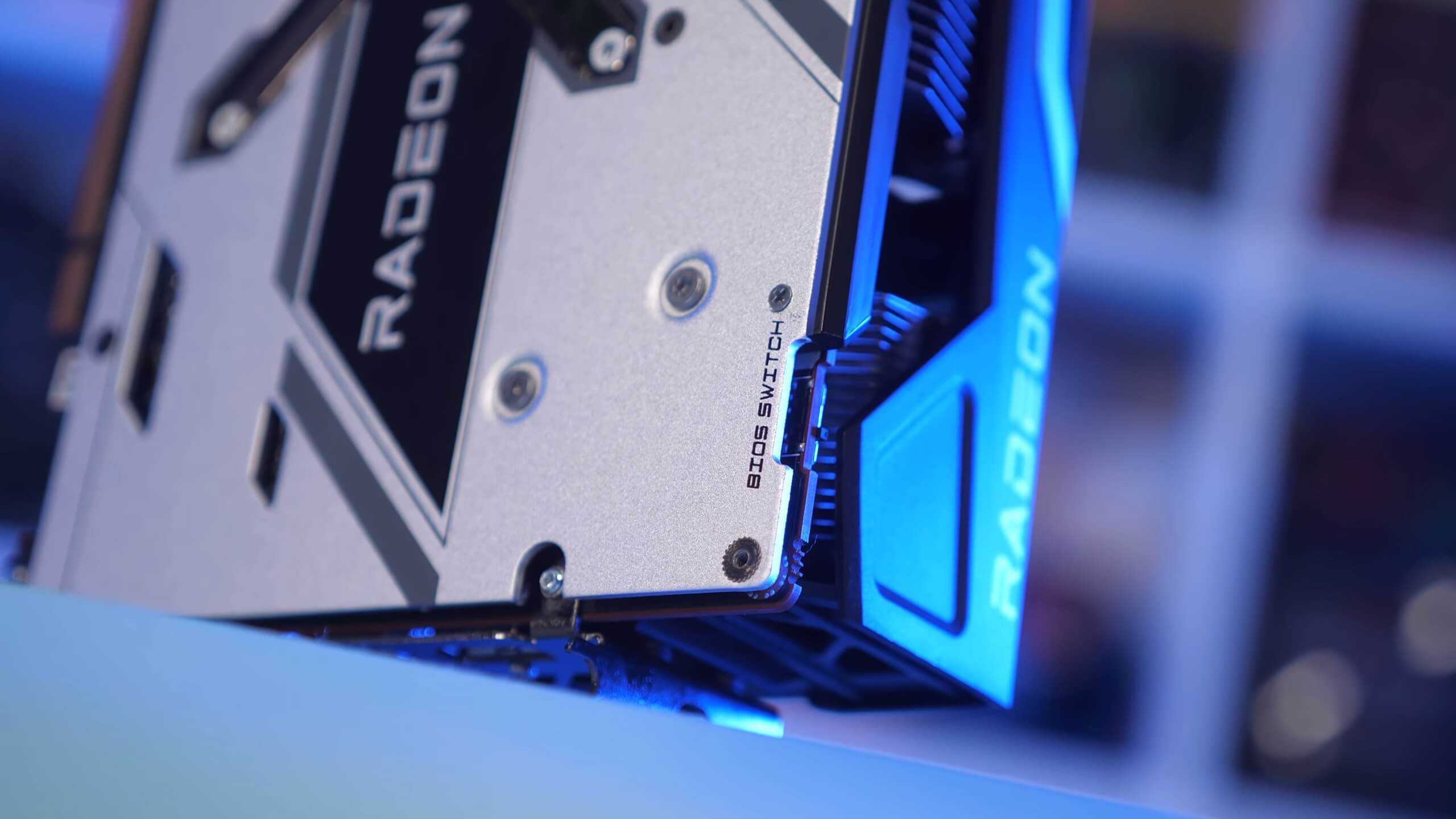Today we're checking out Sapphire's new Nitro+ Radeon RX 6800 XT graphics card, which of course is powered by one of AMD's latest GPUs. Sapphire offered one of the best RX 5700 XT models around, so we're very keen to check this thing out and see what else has changed when compared to previous 5700 and Vega series Nitro+ models.
In terms of dimensions, this is a large graphics card measuring 310mm long, stretching 17% longer than the AMD reference model. It also stands 134mm tall and 55mm wide, making it 12% taller and wider than the reference model, so it will take up three expansion slots. The RX 6800 XT Nitro+ is rather large however it only weighs in at 1230 grams, surprisingly light for the size considering the reference card weighs in at 1510 grams.
Sapphire told us they've focused on refining the heatpipe and fin design of the RX 6800 Nitro+ and as a result, it's lighter than past models. For example, when compared to the Vega 64 Nitro+ which featured a 1580 gram heatsink – a cooler that weighs more than the entire 6800 XT Nitro+ – this new model only packs a 775 gram heatsink. This means Sapphire has been able to reduce the heatsink's weight by almost 50%, even though Vega 64 and the 6800 XT feature the same board power rating.
Design-wise, the Radeon 6800 XT Nitro+ looks fairly similar to the 5700 XT version with a few obvious modifications. The fans have been redesigned and look remarkably similar to the axial-tech fans from Asus. They feature a similar ring design, though Sapphire has added some slots to the 100mm outer fans which rotate counterclockwise. Meanwhile, the centrally located 90mm fan spins in a clockwise direction.
The fan shroud has been constructed using plastic, but it looks good and features the typical Nitro+ silver highlights. RGB lighting can be found on the outer edge, there's backlit Sapphire branding, and a thin light bar. Then around on the backside of the card we find a full-length silver backplate with a backlit Nitro logo. The backplate looks nice and features a number of cutouts to aid air-flow.
A look at the I/O panel reveals a standard configuration that includes a single HDMI 2.1 port and three DisplayPort 1.4 outputs.
We tore down the card after removing a series of screws from the backside of the card, so the main cooler can be removed. The primary heatsink with the three fans and plastic should weigh in at just 668 grams, that's incredibly light. It's designed to cool just the GPU directly while a second much smaller heatsink will capture air-flow from the main heatsink to cool the VRM and GDDR6 memory.
This is similar to the design used by Sapphire's 5700 XT model which worked well, ensuring cool operating temperature for all the critical components. Getting back to the primary heatsink though, we find a small copper base plate which connects to half a dozen 6mm thick nickel plated copper heatpipes which disperse the heat though three separate banks of aluminium fins.
The smaller heatsink which is really a series of smaller heatsinks connected on a baseplate using two low-profile heatpipes. It's a neat kit that directly cools the GDDR6 memory along with the powerstages and inductors.
On the PCB we find a robust VRM packing 16 powerstages along with a pair of 8-pin PCIe power connectors and a dual-BIOS switch. For the powerstages Sapphire is using Infineon's TDA21472 OptiMOS powerstages which are rated for a 70A capacity. 13 have been used to deliver power to the GPU, 11 for GFX and 2 for SOC. Then, in addition to that, there's a single phase for GPU power, VDDCI and 2 phases for the GDDR6 memory.
Finally, on the rear of the PCB we find a single thermal pad which has been used to remove heat from the backside of the VRM, or at least the VRM components located on the right side of the board. We expected to find more thermal pads here, but Sapphire has deemed that unnecessary. Still, it's good to see that some heat is being transferred to the aluminum backplate.
The Sapphire RX 6800 XT Nitro+ lists a boost clock frequency of 2360 MHz, which is a 5% increase over the 2250 MHz default AMD spec. The GDDR6 memory has been left stock at 16 Gbps. When compared to other factory OC graphics cards, a 5% overclock is mild, so it'll be interesting to see how much OC headroom is left.
Playing Shadow of the Tomb Raider for 30 minutes saw the Nitro+ peak at 73 degrees in a 21 degree room inside the Corsair Obsidian 500D fully populated with fans. That's just 2C cooler than the AMD reference card, though keep in mind power consumption has increased by ~13% and the fans speed is slightly reduced.
Speaking of fan speed, in order to maintain this temperature the fans spun at just 1500 RPM which is very low. The typical core clock speed seen during our testing was 2365 MHz and that saw power consumption hit 336 watts for just the graphics card, an 13% increase over the AMD reference model.
When overclocking to the card's limit we saw a peak operating temperature of 73 degrees, but this time the fans spun up to 1700 RPM. The card remained very quiet and couldn't be heard over the case fans even then. The overclock saw the cores operate at 2560 MHz on average, and the memory also hit 17.2 Gbps, which is the current limit enforced by AMD. Finally, when pushed to the overclocking limit, the card sucked down 364 watts, or an 8% increase from the stock factory OC configuration.
For benchmarking we used our GPU test rig that consists of a Ryzen 9 3950X and 32GB of DDR4-3200 CL14 memory and the latest drivers available.
Benchmarks
Since we've already thoroughly tested the Radeon RX 6800 XT GPU, for reviewing a custom AIB offering we didn't bother retesting with many games as the figures are pretty much the same. Here's a quick look at out of the box performance along with a manual overclock in Shadow of the Tomb Raider.
At 1440p we're looking at a mere 3% performance improvement for the Nitro+ over the AMD reference card, while we were able to squeeze a further 3% with a manual overclock.


The gains at 4K are a little more impressive. Here the Nitro+ was 5% faster than the Radeon reference board out of the box, and then 10% faster with our overclock. That's not an amazing improvement, but it was enough to match a stock RTX 3080.

When it comes to power consumption, the Sapphire Nitro+ is tuned more aggressively than AMD's reference as power consumption has been increased by 13%. Our manual overclock increased power usage by a further 8%, and now we're above what the RTX 3090 Founders Edition sucks down.

The stock operating temperatures of the Sapphire Nitro+ are very impressive, especially given the high bar set by AMD. We're looking at a 2 degree reduction of the GPU and GDDR6 memory, which is not an amazing improvement, but given how good the reference model was, it's a pretty good result.
When it comes to VRM temps, we're looking at a 6C reduction, which is significant, though again both models do maintain a very cool VRM temperature that's well within spec.

Here's a quick look at noise normalized operating temperatures, though please note we're not power normalizing the cards as we feel that's one step too far, making it more of a scientific test and less practical consumer advice. The big advantage of the Nitro+ is its increased power target, beyond what can be achieved with the reference model, so it's unlikely you'll be dialing it back for even lower thermals, but you'll possibly tweak the fan curve.
When noise normalized, there's virtually no temperature difference between these two models, which is an impressive result for the Nitro+ given it's handling 13% more power.
Wrap Up
The Sapphire RX 6800 XT Nitro+ is everything we've come to expect from a Nitro+ graphics card: it's cool, quiet, and offers a good amount of OC headroom, at least when compared to the AMD reference graphics card.
AMD set a high bar with the Radeon RX 6000 series reference boards, for the first in a very long time. However, that was not a problem for Sapphire as they've been building custom Radeon cards for years and in this instance managed to match the reference's thermals, while offering superior out of the box performance. The much lighter design should be easier on your PCIe slot, too, and by shaving off that extra weight, the reduced PCB flex should be an advantage to consider.
Excessive weight also makes it more challenging to mount the cooler to the GPU die, something Asus has had trouble with in the past, most notably with their Strix 5700 XT.
In terms of performance, the Nitro+ is excellent. Whether or not it's the best 6800 XT has yet to be seen, but it's certainly good enough to recommend. Key reasons to purchase the Nitro+ over a reference model include dual BIOS support and increased overclocking headroom. Other reasons might include stuff like the physical design, although in this particular aspect I personally prefer the all aluminum construction of the reference card.
Finally, there's price. Unlike the limited-release AMD reference model which targets the MSRP, the Nitro+ will certainly be fetching a premium. Given Sapphire's 5700 XT version came in $60 over MSRP, we'd estimate the 6800 XT Nitro+ will cost at least $700. That's RTX 3080 money, but of course, you won't be able to buy one of those right now (and possibly for the next few months). We're crossing our fingers for good Radeon RX 6000 availability in the next 3 to 4 weeks, but we'll have to wait and see if Radeons don't suffer the same fate as GeForce GPUs.
